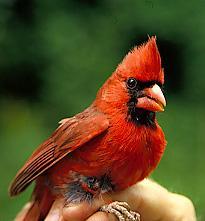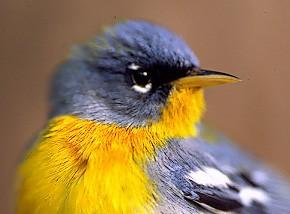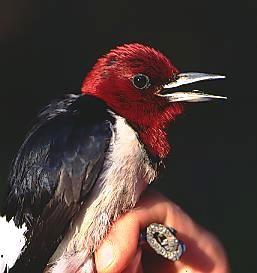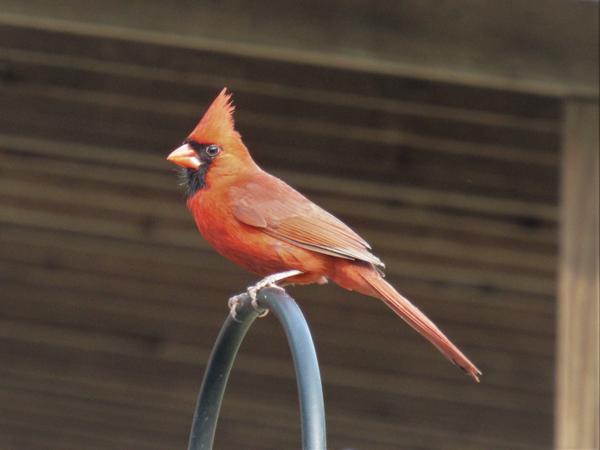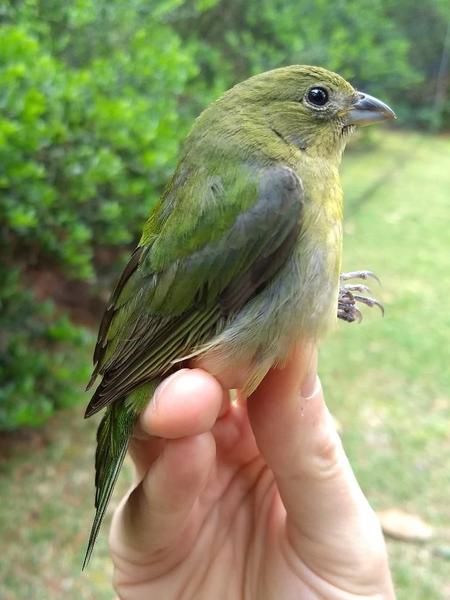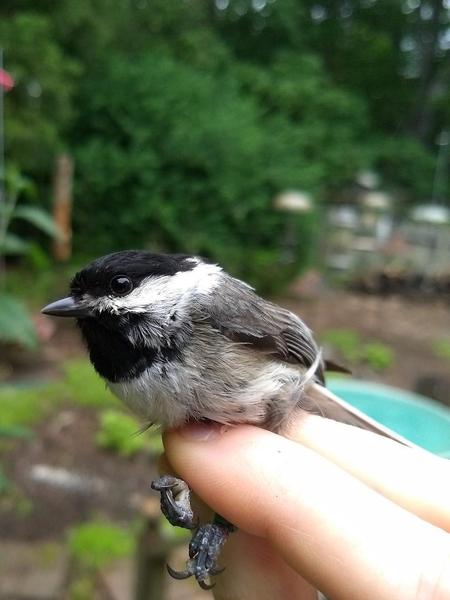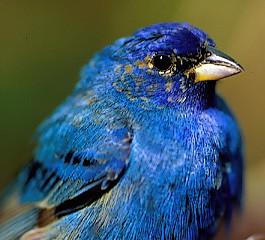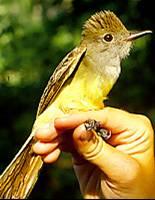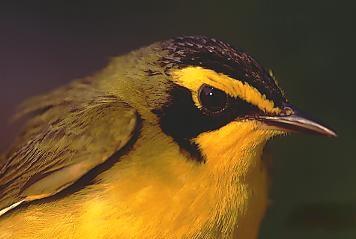Habitat Requirements
At least 100 species of songbirds breed in the Southeast, with many additional species overwintering or passing through as migrants. All of these birds require food, water, and cover (e.g., protection from predators and harsh weather; a place to build a nest). However, habitat requirements differ among species, and many birds can generally be linked with specific successional stages (see table below). Additionally, individual species are associated with specific vegetation layers within a plant community. For example, in a mature forest, some bird species live in the understory and others spend most of the time in the canopy. Some birds, including northern cardinal and tufted titmouse, have generalized habitat requirements and even thrive in urban environments; on the other hand, other species have narrow habitat requirements and may require large areas of undeveloped forest (e.g., wood thrush) or grassland (e.g., eastern meadowlark).
|
Species |
Grassland |
Shrubland |
Mature Pine or Mixed Pine-Hardwood Forest |
Mature Hardwood Forest |
|
Eastern meadowlark |
X |
|||
|
Grasshopper sparrow |
X |
|
||
|
American goldfinch |
X |
X |
||
|
Northern bobwhite |
|
X |
|
|
|
Yellow-breasted chat |
X |
|||
|
X |
||||
|
Prairie warbler |
X |
|||
|
Carolina wren |
X |
X |
X |
|
|
X |
X |
X |
||
|
Brown-headed nuthatch |
X |
|||
|
Summer tanager |
X |
|||
|
X |
X |
|||
|
Tufted titmouse |
X |
X |
||
|
Downy woodpecker |
X |
X |
||
|
Wood thrush |
X |
|||
|
X |
||||
|
X |
||||
|
American redstart |
X |
|||
|
Modified from Johnston and Odum (1956) and Meyers and Johnson (1978) |
||||
Cover
Individual nesting behaviors are unique to each species. The majority of songbirds build cup-shaped nests in woody understory vegetation, so it is critical to maintain this vegetation layer on properties when the goal is to promote songbird diversity. About three-fourths of all birds place nests less than 15 feet above the ground, with an average height of eight feet. Other songbirds nest in natural tree cavities, abandoned woodpecker holes, in the side of steep banks and cliffs, and on the ground.
Nest boxes can be constructed and placed on a property to create artificial nesting sites for cavity-nesting birds. For more information about building nest boxes for songbirds, please refer to the Working With Wildlife publication Building Songbird Boxes.
Food
Depending on the species, songbirds eat fruits, seeds, and invertebrates, including spiders and insects. Most songbirds are insectivorous during all or part of their lives (e.g., when raising young, which require the protein), providing an important biological control on overabundant invertebrates.
|
Trees |
Shrubs and Vines |
Grasses and Forbs |
|
Pine |
Blackberry |
Foxtail grass |
|
Oak |
Elderberry |
Panicgrass |
|
Mulberry |
Blueberry |
Native sunflowers |
|
Dogwood |
Virginia creeper |
Pokeweed |
|
Blackgum |
Poison ivy |
Ragweed |
|
Wild cherry |
Grape |
Smartweed (Polygonum) |
|
Holly |
Wax myrtle |
Doveweed (Croton) |
Water
Many songbirds use shallow open water for bathing, so a bathing area can be created in a yard to attract birds. A bathing area should be no more than 2 to 3 inches deep with a relatively hard bottom. The bath should be gently sloping, free of vegetation, and frequently replenished with fresh water. The bathing areas should be at least 10 to 15 feet away from dense ground cover. Similarly, naturally occurring areas of open water, including man-made impoundments, marshes, and beaver ponds, can attract a diverse variety of birds and other wildlife.
Home Range
Some forest-dwelling songbirds are migratory, and others remain year round. Neotropical migrants – such as many warblers, vireos, and flycatchers - spend only the spring and summer in United States and Canada and overwinter in the Caribbean and Central and South America. Other songbirds, such as northern cardinal, Carolina chickadee, tufted titmouse, Carolina wren, American goldfinch, eastern towhee, and most woodpeckers, overwinter within the region and are termed “residents.” The home range (or defended territory) for nesting birds is usually correlated to body mass. For example, warblers are small and generally have a home range of 1 to 15 acres; woodpeckers are larger and may range 200 acres; and ravens have a home range of up to 10 square miles.
Songbird Management
Tips for Improving Songbird Habitat
General
- If possible, avoid harvesting trees from April through June (the nesting season), especially if harvests are large or extend across a large portion of the landscape.
- Choose native plant species for landscaping, especially when songbirds are an emphasis. The caterpillar host plants for moths and butterflies generally are native plants, so vegetation dominated by non-native plants will lack the caterpillars that are an important food source for many breeding and migrating songbirds.
- Promote vertical structure in forests and suburban landscapes when managing for songbirds. Songbird species segregate themselves vertically among all vegetation layers, with some species using the canopy and others using the understory. Having all the layers ensures the greatest number of bird species will be present.
Regeneration
- Favor shelterwood or seed-tree harvests when possible, because these methods retain overstory trees that provide food and cover for canopy-dwelling songbirds.
- Maintain a diversity of seral stages (i.e., stand ages) across the landscape by distributing timber harvests over space and time.
- Leave snags in place for cavity nesters and for perching, as long as the snag is not a threat to loggers or permanent structures.
Intermediate Treatments
- Thin early in the rotation and frequently, targeting lower basal areas (<60 square feet per acre) when possible. The lower basal area allows light to reach the ground, so understory plants can grow.
- Use prescribed burning to maintain an understory of grasses, forbs, and shrubs.
- Follow thinning with prescribed burning to consume leaf litter and expose bare soil for germination of forbs and grasses.
- Implement the fire frequency most appropriate for the focal species. For example, a return interval of every 2 or 3 years is appropriate for ground-nesting Bachman’s sparrow and a return interval of every 3 to 5 years is appropriate for a shrub-nesting species like prairie warbler or northern cardinal.
- Avoid prescribed fires in the early, growing season (April through June) when birds are nesting, especially when burning large areas at once.
Direct Improvements
- In suburban or urban landscapes, provide open water for drinking and bathing and erect nest boxes suited to desired cavity-nesting bird species.
- Construct/maintain scattered brush piles, or piles of residual logging debris during harvest operations.
- Keep cats indoors. Free-ranging domestic cats (both pets and feral individuals) are a major predator of songbirds and kill more than 1 billion birds each year in the United States alone.
Songbirds respond very predictably to the structure and composition of vegetation communities and therefore are unique barometers of environmental conditions. Management techniques designed to foster diverse and abundant songbird populations will benefit many other wildlife species, such as the examples below.
|
Mature Forest |
Forested Wetland |
Fallow Fields (Grass-Forb Communities) |
Young Forest |
|
Gray squirrel |
Great blue heron |
Bobwhite quail |
Cottontail rabbit |
|
Fox squirrel |
Red-headed woodpecker |
Red fox |
Ruffed grouse |
|
Raccoon |
Wood duck |
Northern harrier |
Gray fox |
|
Wild turkey |
Beaver |
American kestrel |
White-tailed deer |
|
Black bear |
Red-tailed hawk |
|
References
Johnston, D. W., and E. P. Odum. 1956. Breeding bird populations in relation to plant succession on the piedmont of Georgia. Ecology 37:50-62.
Meyers, J. M. and A. S. Johnson. 1978. Bird communities associated with succession and management of loblolly-shortleaf pine forests. In: U. S. For. Serv. Gen. Tech. Rep. SE-14.
Working With Wildlife
North Carolina State University Extension - Forestry
Working With Wildlife Series
Publication date: May 15, 2019
Reviewed/Revised: May 28, 2024
N.C. Cooperative Extension prohibits discrimination and harassment regardless of age, color, disability, family and marital status, gender identity, national origin, political beliefs, race, religion, sex (including pregnancy), sexual orientation and veteran status.
N.C. Cooperative Extension prohibits discrimination and harassment regardless of age, color, disability, family and marital status, gender identity, national origin, political beliefs, race, religion, sex (including pregnancy), sexual orientation and veteran status.

